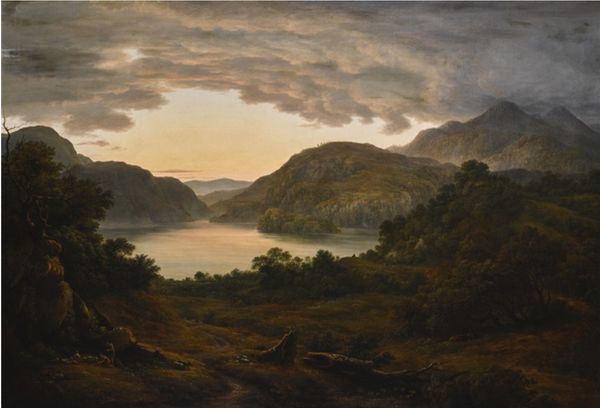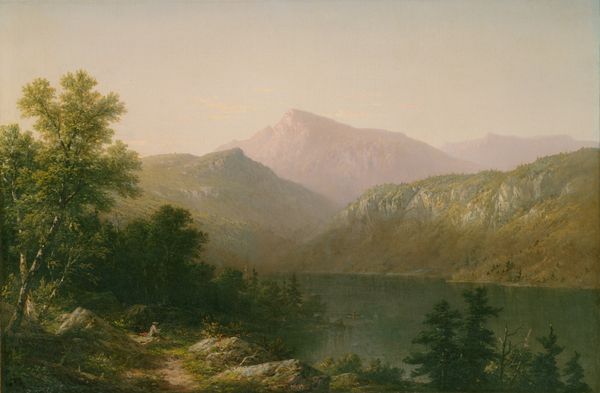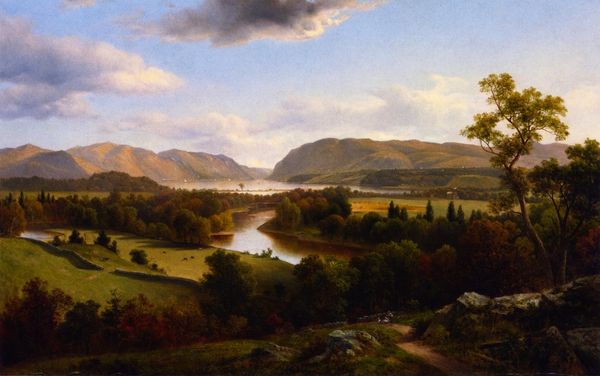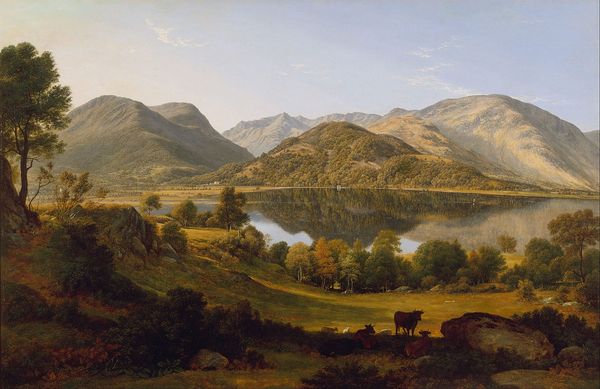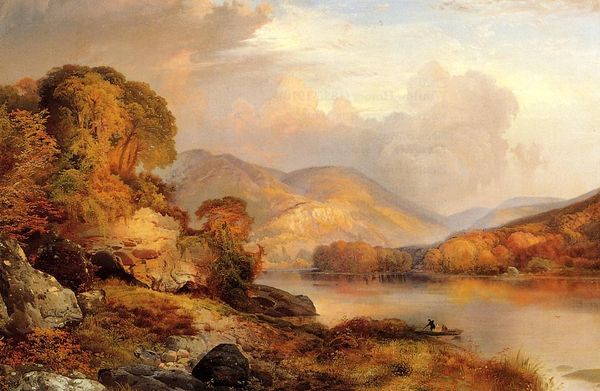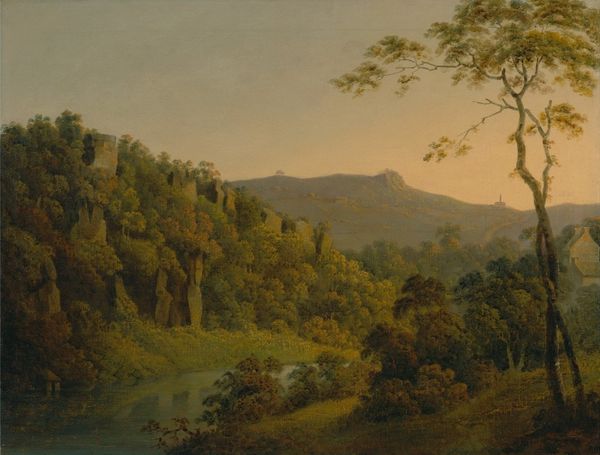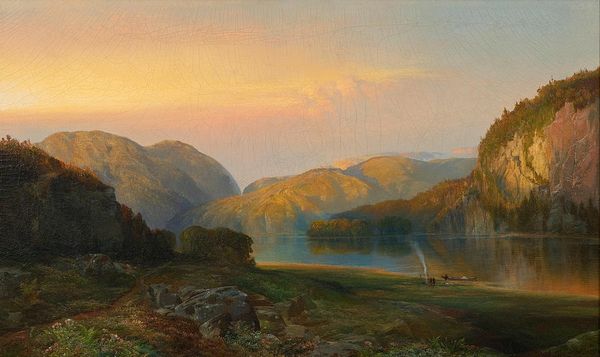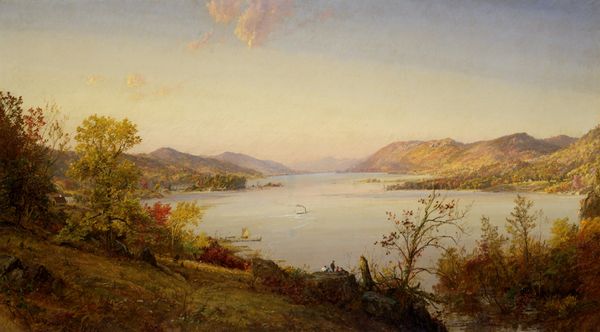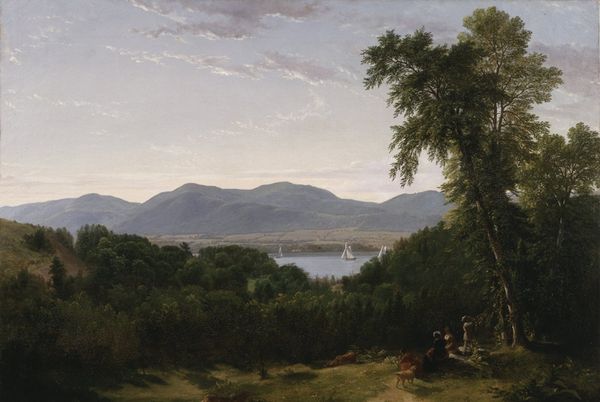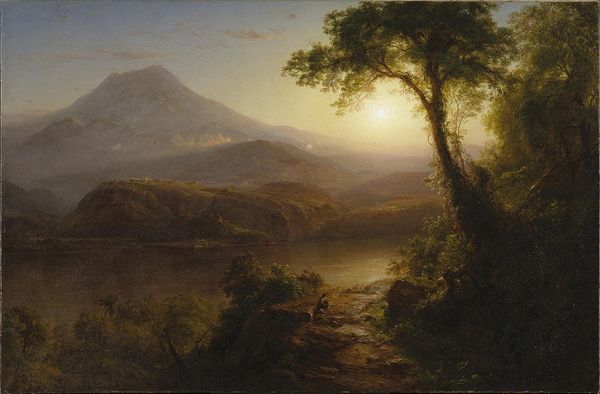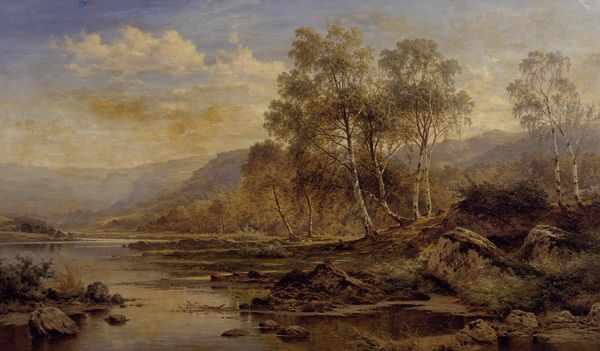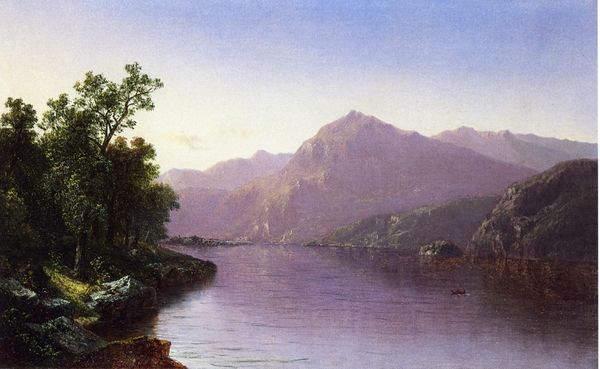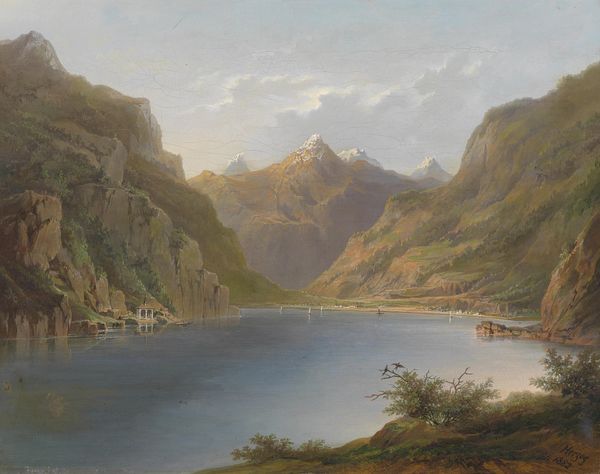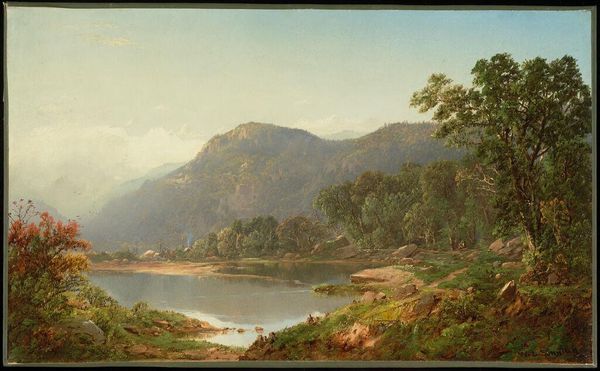
plein-air, oil-paint
#
plein-air
#
oil-paint
#
landscape
#
romanticism
#
history-painting
#
realism
Copyright: Public domain
Curator: John Glover, a painter closely associated with the English landscape tradition, completed this oil on canvas, titled "Landscape view in Cumberland," around 1820. Editor: It’s melancholic. That low horizon line with those hazy, almost bruised colours in the sky…it’s wistful, bordering on oppressive. It gives an overwhelming feeling of solemnity. Curator: Glover spent his early career establishing himself as a leading landscape painter. He participated in the burgeoning art market of London and exhibited widely. His choice of Cumberland speaks to the romantic movement’s growing interest in the sublime beauty and national pride associated with such scenery. Editor: What's compelling is the light. It doesn’t bathe the scene; it just skims it. Those huddled sheep seem like symbols of vulnerability, maybe innocence. The overall composition hints at themes of transience, of nature’s dominance…or perhaps God's dominion. The scale dwarves humanity, which I find really captivating. Curator: Indeed, and consider the artistic choices at play here. The realism blends effortlessly with the historical painting. He’s placing everyday scenery within a historical context, imbuing the familiar with a sense of importance and national identity, particularly given the post-Napoleonic context and the search for defining cultural touchstones. The landscape itself was being claimed and idealized by artists and landowners alike. Editor: It’s not just landscape, is it? It's a moodscape. That particular gradient of pink and grey—I keep seeing it recur in Romantic painting. A very subtle message that nature has moods that we, with all of our human endeavors, can't change. Curator: A landscape, a moodscape, and also a history painting... It's easy to see the picturesque aesthetic conventions employed, designed to elicit particular responses from the viewer related to ideas of beauty and the sublime and nationhood, which are central to the social and cultural history of this time. Editor: To see those recurring visual motifs speaks to a larger human impulse, this drive for symbols, these echoes of cultural memory… Curator: A testament, perhaps, to art’s vital role in shaping our perceptions and national identities. Editor: Absolutely, John Glover gave a window to look at symbols and stories, rather than simply at another pretty scenery.
Comments
No comments
Be the first to comment and join the conversation on the ultimate creative platform.
